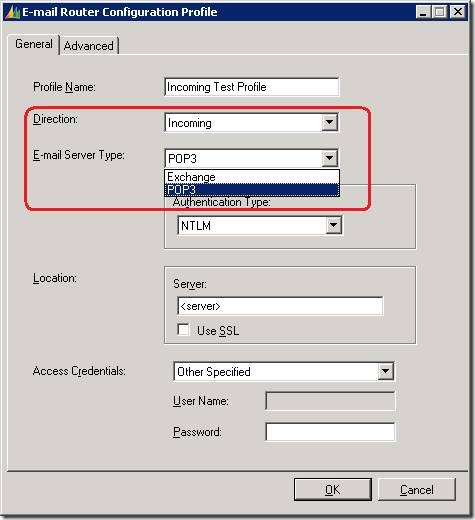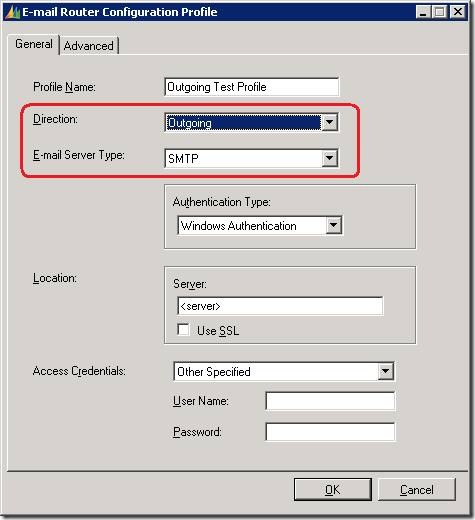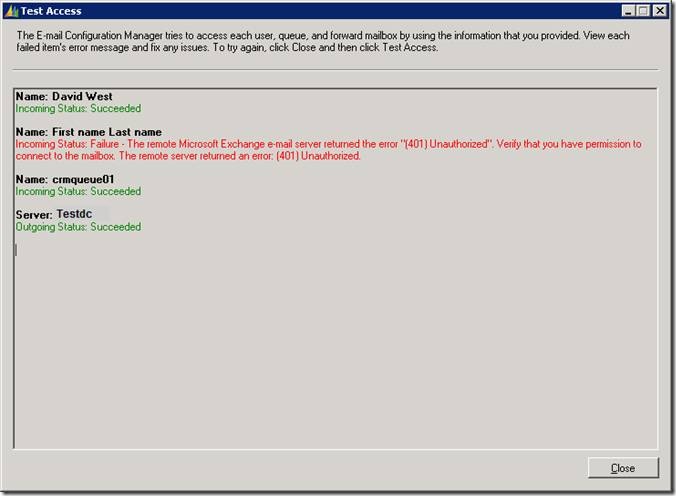What’s New in Microsoft Dynamics CRM 4.0 E-mail Integration
In previous versions of MSCRM, users have been able to integrate their CRM data with e-mail hosted on Microsoft Exchange servers. This was done through the use of Forward Mailboxes. The method used to determine if incoming e-mail messages should be tracked or not was by matching a tracking token in the subject line of the e-mail. In addition, administrators had to install and configure the e-mail router service on the Exchange server hosting the Forward Mailbox.
MSCRM v4 allows you to continue to integrate your e-mail systems in the same way, but many new advancements in design enable users to create a richer and customized solutions for their unique situations and configurations. Here is a look at many of the new features and functionality of the MSCRM v4 e-mail integration story.
No more tracking tokens! The e-mail tracking token is used help the router decide if an incoming e-mail should be tracked in CRM or not, and if it is to be tracked it will ensure that the correct regarding object is set for the received e-mail activity. This option still exists in v4, however it is now optional. MSCRM v4 utilizes smart matching technology which renders the tracking token obsolete. Smart matching enables the e-mail router to process incoming e-mail to determine CRM relevance by comparing subject lines and party lists (user e-mail addresses in the to:, from:, cc: and bcc: lists) with e-mails already existing in CRM. The tracking token can be configured or enabled/disabled by a CRM system administrator via the System Settings dialog.
Monitor individual mailboxes. Previously, all incoming e-mail was monitored through the Forward or “Sink” mailbox. E-mail sent to CRM users and queues was forwarded as an attachment to a specified mailbox which the e-mail router monitored for e-mail processing. In v4, administrators have the ability to monitor individual mailboxes directly, or monitoring incoming e-mail through the Forward Mailbox or the Outlook client. This setting is specified in a dropdown list on the MSCRM user or Queue record form (E-Mail Router), and it is configured using the E-Mail Router Configuration Manager tool.
MSCRM v4 offers administrators the flexibility to configure users and queues in multiple methods in the same deployment. It is possible to configure some user/queue mailboxes to be monitored directly on one e-mail server while others are configured so the E-mail Router processes mail from a Forward Mailbox on a different e-mail server. Individual mailbox monitoring also provides the administrator the option to allow CRM users to enter their email credentials securely in their personal options.
New e-mail tracking options. CRM users also have the option to customize what types of e-mail messages the E-mail Router will track. These options include all incoming e-mail, mail in response to CRM e-mail, or incoming e-mail from CRM accounts, leads, or contacts. This functionality is available for queue records as well directly within the queue edit form.
Improved e-mail configuration management. MSCRM v4 now provides the ability to customize and configure the e-mail router service to meet all incoming and outgoing e-mail connectivity requirements via a Configuration Manager application. This UI-based tool allows an administrator to configure incoming and outgoing profiles, including connection types, direction, access credentials, connection ports, time outs and other connection details. Connections to CRM deployments can also be similarly configured. Based on the deployment selected, both incoming and outgoing e-mail profiles can be specified for selected users, queues, and forward mailbox.
Support for POP3. Until now, all e-mail monitoring and processing was only possible with mailboxes on Exchange servers. MSCRM v4 now offers administrators the flexibility to utilize POP3 mail for their user base. POP3 monitoring is configured through out-of-the-box settings in the E-mail Router Configuration Manager tool.
De-coupled Router Service. In v3 the E-mail Router had to be installed on the same Exchange server hosting the Forward Mailbox. In v4 we have removed this restriction allowing the administrator to install and run the service from any machine which can communicate with both the MSCRM server and the e-mail server. The router is effectively an intermediary connecting the two separate systems (CRM and e-mail) and this new design enables full functionality without the previous restrictions. All that is needed are the administrator credentials to connect to MSCRM and the credentials to communicate with the remote e-mail server.
Configurable SMTP connection for outgoing e-mail. In the previous CRM versions outgoing e-mail was delivered via the MSCRM platform using a remote or local SMTP server. In v4 this is easily configured via the E-mail Router Configuration Manager tool. Given the flexibility of the e-mail connector, it is now possible to define multiple outgoing SMTP server profiles. This is extremely useful for enterprise deployments where you may want users in one region to use one SMTP server and users in another region to use another SMTP server. As with the incoming profile configurations, all that is needed to properly connect to the SMTP server(s) are the proper login credentials.
Extensibility. The E-mail Router in MSCRM v4 provides the extensibility for external vendors to create their own custom e-mail providers which can be plugged into the MSCRM E-mail Router service. The custom providers can be written to perform deployment-specific tasks such as downloading RSS feeds and tracking them as e-mails, blocking e-mails with certain types of attachments, analyzing e-mail responses and uploading statistics, etc. The public class used for creating custom e-mail providers is Microsoft.Crm.Tools.Crm.EmailProvider.
Improved troubleshooting. In MSCRM v3, 7 performance counters were provided which tracked message processing such as the number of e-mail messages delivered, discarded, processed, etc. In MSCRM v4 the performance tracking capabilities have been improved by increasing the number of counters to 21. This will enable administrators to better track e-mail processing in order to manage overall e-mail router performance.
Within the E-mail Router Configuration Manager administrators have the ability to verify connectivity between the CRM system and the e-mail servers/mailboxes being configured via the Test Access feature. This process actually shows the administrator whether a connection can be expected to work as configured. In the case where a connection fails, useful error messages are surfaced to describe the problems in the connection to aid in troubleshooting.
Additional “What’s New” Changes. Along with the items already discussed, the following are noteworthy changes made to the MSCRM v4 E-mail integration story.
- Exchange 2007 compatibility. In addition to Exchange 2003, the MSCRM v4 e-mail router is fully compatible with Exchange 2007.
- 64 bit support. The e-mail router service, the rule deployment wizard, and the router configuration manager are fully supported in both 32-bit and 64-bit versions.
- Parallel execution of mailbox processing. The e-mail router can now process e-mails in parallel.
Summary
These items highlight the advancements made in the area of E-mail support in the latest release of MSCRM. Look for future blogs highlighting topics such as how to set up and configure e-mail for your MSCRM v4 deployment in an enterprise environment utilizing the Forward Mailbox monitoring functionality effectively for scale, using individual mailbox and MSCRM Outlook client monitoring with POP3 and/or Exchange providers and proper login credential management, and troubleshooting common problems along with suggested solutions.
For further information about Microsoft Dynamics CRM v4 e-mail configuration and usage, please visit the following resources:
- For system requirements see chapter 3 System Requirements and Required Components in the Planning Guide that is in the Microsoft Dynamics CRM 4.0 Implementation Guide document set.
- For planning see the Planning for Exchange or POP3 topic in chapter 4 Planning Requirements in the Planning Guide that is in the Microsoft Dynamics CRM 4.0 Implementation Guide document set.
- For installation instructions see chapter 3 Microsoft Dynamics CRM E-mail Router Installation Instructions in the Installing Guide that is in the Microsoft Dynamics CRM 4.0 Implementation Guide document set.










